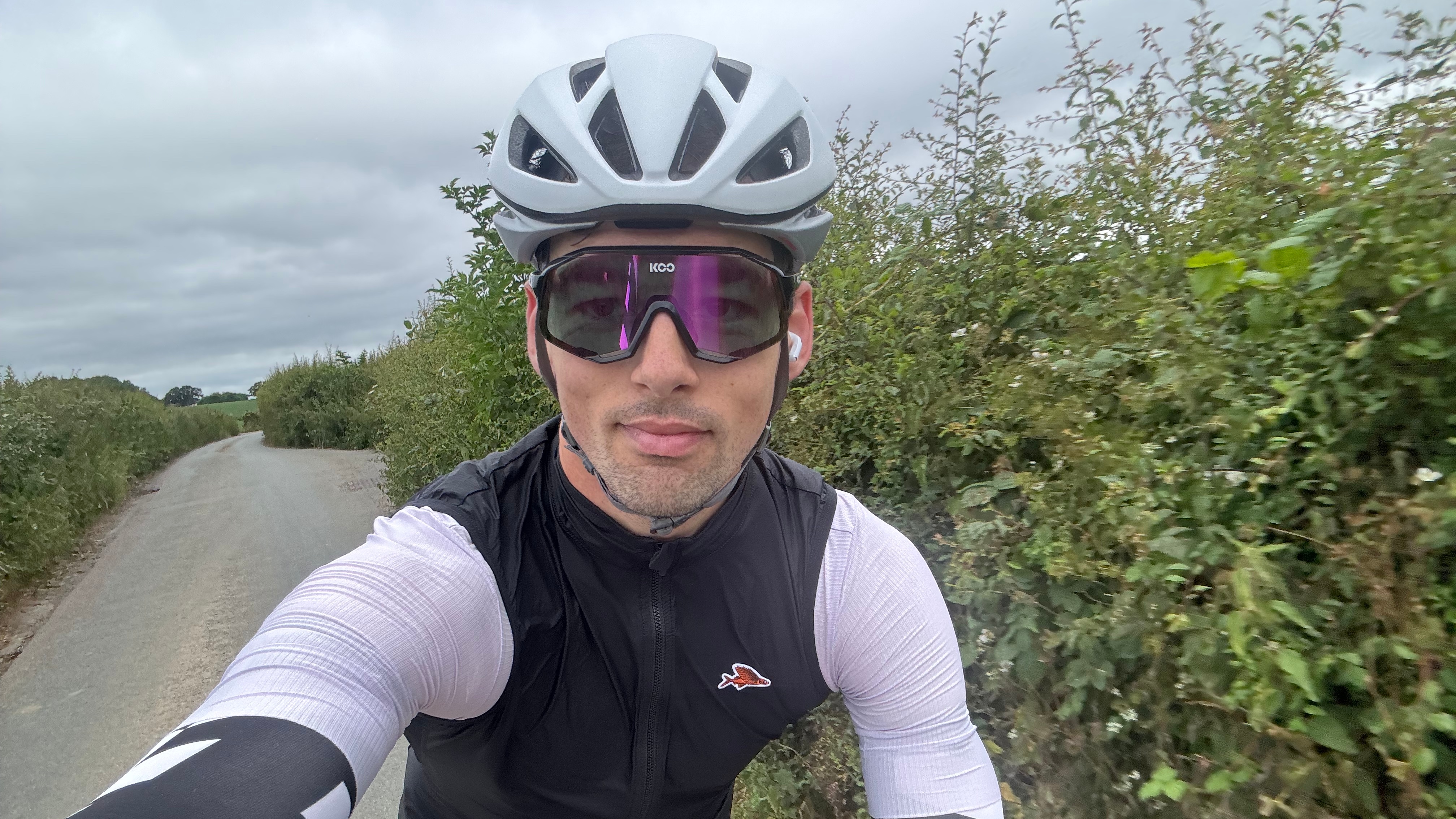
Cyclists are always looking for the next milestone. For those who hold distance above all else as the marker of achievement, a 200-kilometre ride tends to be the next stamp on the report card after 100 km, and then 100 miles. I should know, with a day job as a cycling coach, my livelihood is built upon helping people to achieve their ambitions.
So, when I set about with my own ambition - to cover 200 km (or 124.27 miles) with as little discomfort as possible - my secondary goal was to work out what I could get right the first time and which areas might need future honing.
Here’s a look at what went well, and what didn't.
Fueling with gels, Jamaican ginger cake and Ketones
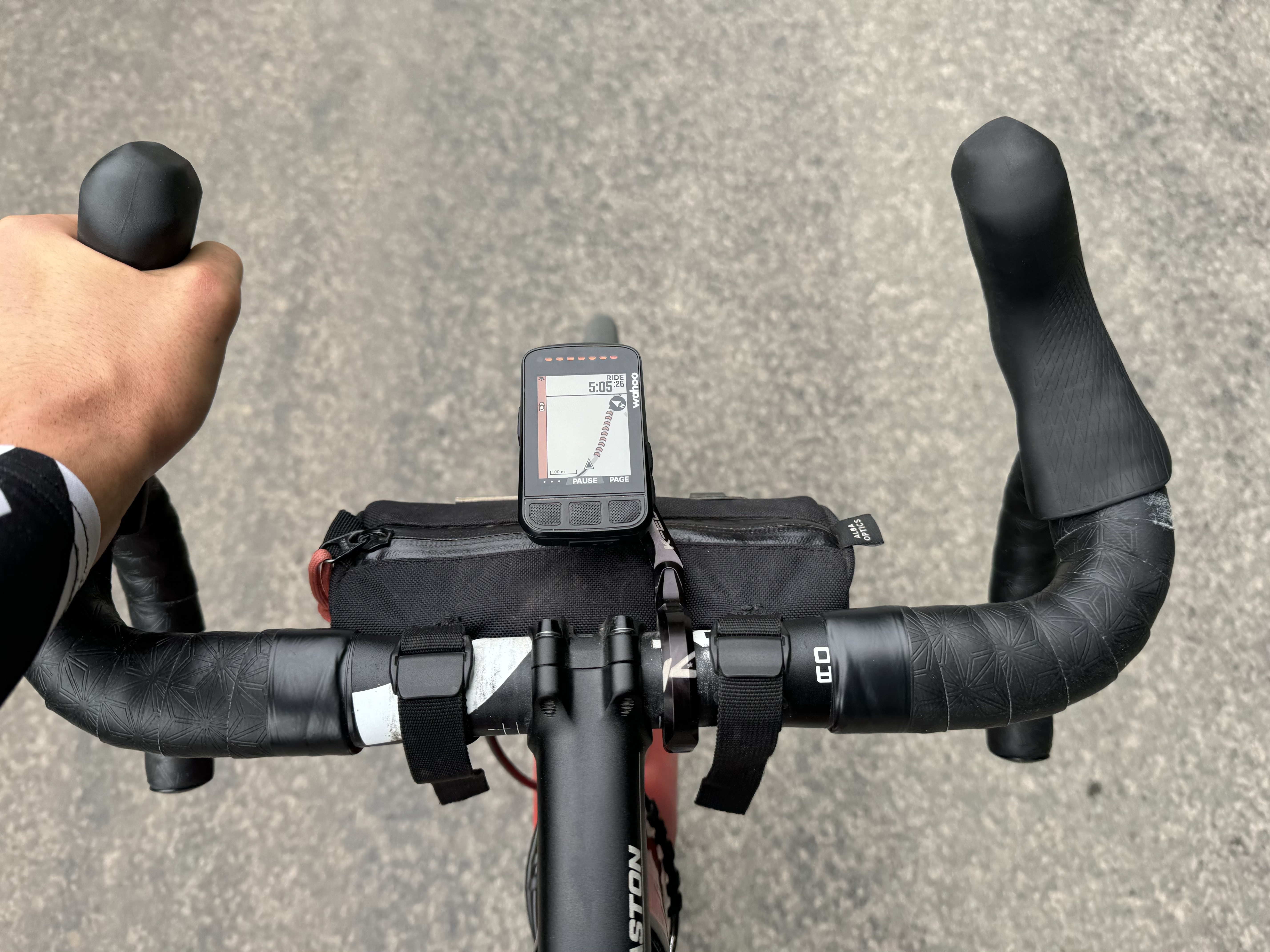
Getting the fueling right is a major determent of success during a high-volume aerobic challenge, such as a 200km ride. During exercise, we burn mainly fats and carbohydrates. At lower intensities, we use more fats - which most adults have a ready store of, with even lean athletes having around 10,000 calories worth stored away - but carbohydrates, which need to be regularly topped up, are still important.
My plan was to consume 90 grams of carbohydrates an hour, with a target of around 600g total over 6.5 hours. I used a mix of Jamaican ginger cake (200+g of carbs itself), energy drinks, energy bars, and energy gels spread out throughout the ride. I find I can get sick of gels and sugary liquids so I like to use those earlier, before switching to solid food when my capacity for the sweet stuff has reached its end.
Energy drinks and gels are preferable for high-carb intake, as they’re formulated to follow an optimal ratio of glucose and fructose. This allows for the maximal possible absorption rates with 60g/hr the limit for glucose absorption and fructose similar with the aid of gut training. The optimal ratio is currently seen as 1:0.8 ratio of Glucose to Fructose which is used in the likes of SiS Beta Fuel and other brands. However, plain white sugar is a 1:1 ratio of the two so can offer a pretty good alternative for less cost. The Jamaican Ginger cake I used also has a mix of glucose and fructose syrup, although I don’t know the exact ratio.
I took more than I would need, as it’s always better to have too little than too much.
In total, I drank two litres of water. This is probably not quite enough, but in temperatures of 10-12˚c, it was about right for me. I also used Ketone shots, something I’ve been experimenting with this year.
Ketones are a complicated topic. In simplistic terms, they may enable the body to better utilise fat stores. They also taste foul and frankly need to be necked followed by a shot of coffee or something with a stronger flavour. However, I reckon they helped to keep my energy levels consistent during the ride; I was even able to push harder in the final hour.
Nailing clothing and equipment
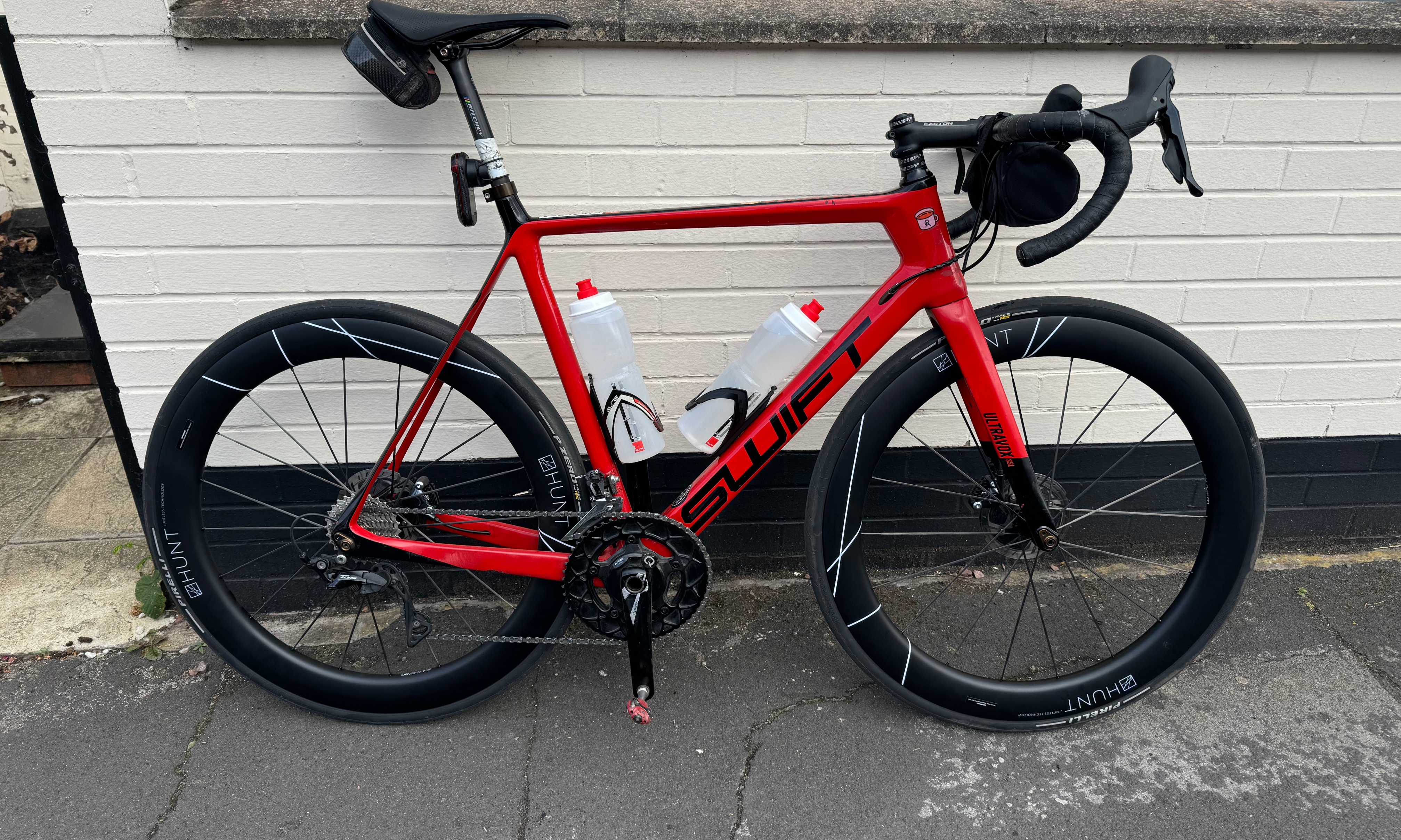
My clothing and equipment choices also contributed towards a good ride. I knew the weather was going to be cool, with minimal chances of showers. I took the advice I usually dish out, and dressed in layers, which could be removed. If you get too cold, there isn’t really any coming back from it. I found a warmer base layer, arm warmers, water and windproof gilet, comfortable bib shorts and jersey were perfect for maintaining an optimal temperature throughout.
I also went for aero socks. Whilst it’s easy to mock the marginal gain, over the course of 6.5 hours/200km, a small watt saving can make a big time difference. Generally, aero socks save around 1.5w at 30kph, and applied to the 206 km route using the app MyWindSock, that 1.5w saving equates to a time reduction of ~99 seconds. It’s not a huge amount, but adding a couple more savings like that together and you’re looking at savings of around 5 minutes.
My shorts featured cargo pockets which I stuffed with food for easy access. It’s also very important to go for equipment that you know will be comfortable. If it’s cooler weather, then thicker materials and a good chamois are vital. Aerodynamics are important for out and out speed, but discomfort will cost more time.
Going big (instead of going home) on tyre choice
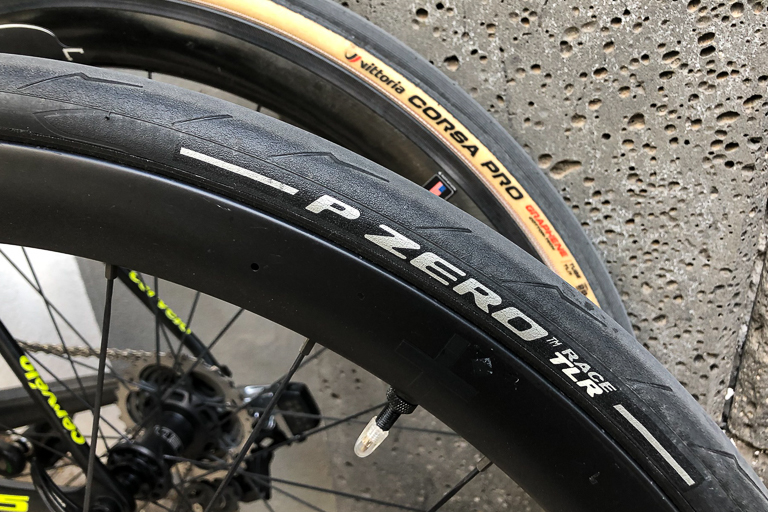
I went high volume on my tyres, and this served me well.
I’ve long been a user of 25mm tyres and narrower rims, just because I haven’t upgraded my old ones. Testing some far wider rims with 28mm tyres at lower pressures was a bit of a game changer in terms of comfort. Even on a more race-orientated road bike setup, with an aggressive geometry and stiffer frame, I found I was more comfortable than my gravel bike recently but with 25mm tyres pumped up to 85/90psi front/rear.
Given the tyres are the contact patch between the bike and the road, they are pivotal to comfort and grip. The tyres I used were fast rolling race tyres, the new Pirelli PZero Race TLR RS 28mm, but at 75 and 70 psi rear and front they offered a great level of comfort too.
Backending the route with climbing
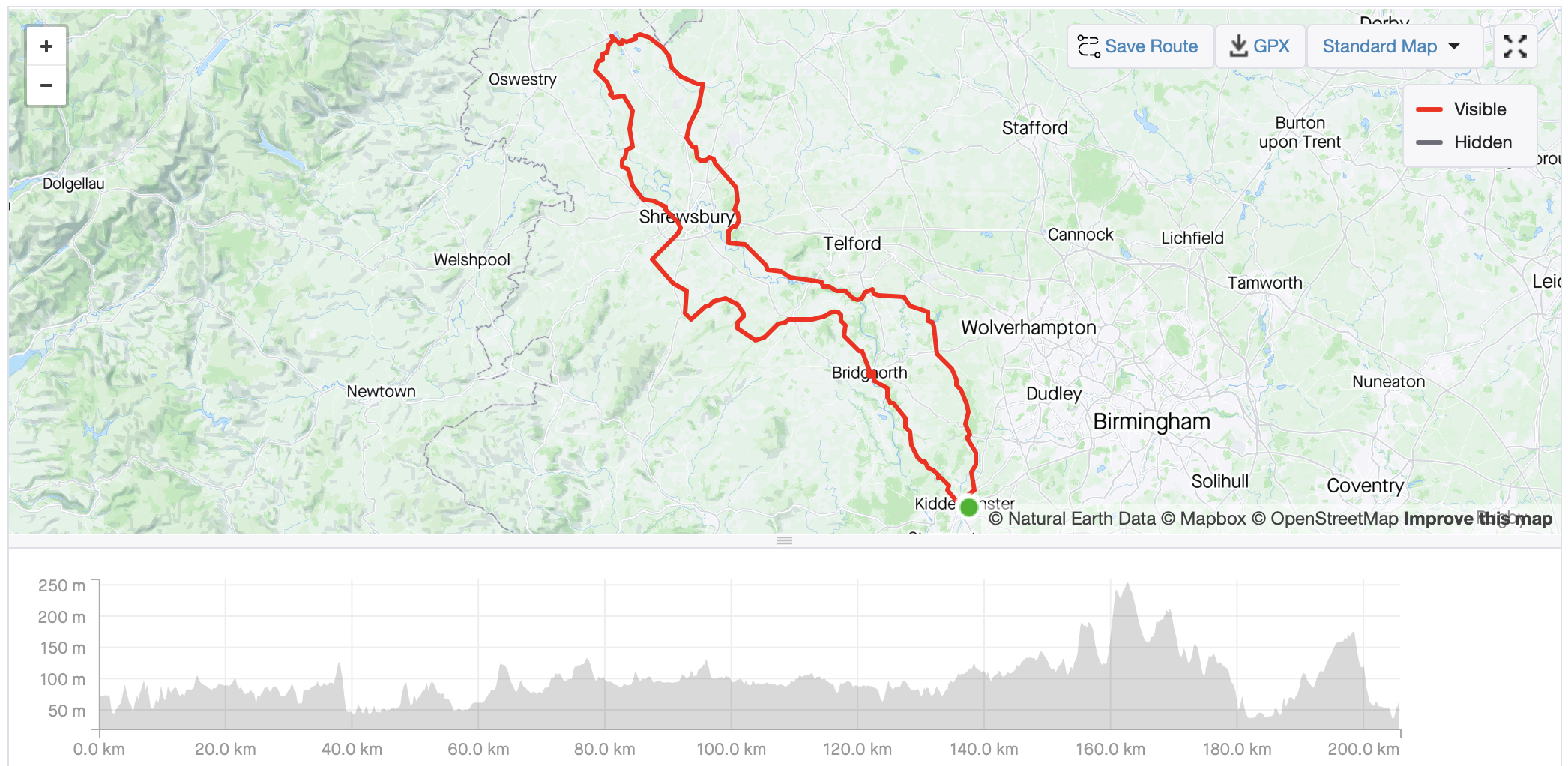
It wasn’t all rosy though, and there were several things I would have changed. Firstly, the route.
My ride set out into a headwind, and back with a tailwind, still my preferred approach. Using the app MyWindsock can be insightful in the planning stages when it comes to incorporating weather conditions. However, the climbing was all very backended, with some fairly steep slopes testing already tired legs.
If you’re setting out with distance as your primary motivator, I’d avoid making my mistake, and look for a flatter route.
This leads me to another area that caused some pain: gearing. I’m still using a ‘standard’ 53/39 chainset and relatively close ration 11-28 cassette, a hangover from my days racing for a UCI team. Nowadays I am not as fit, or as light, so on steeper inclines some larger gearing would have been preferred, something like a 52/36 chainset and a cassette with a larger number of teeth on the smallest gear. My race ratios forced me to push over 360 watts, over a 10% gradient, at the 162km mark, using a low cadence which wasn’t ideal for longevity. The gravel gearing I’ve been used to recently would have been far more ideal, and I missed it terribly in the final 40km.
Missing out on crucial conditioning
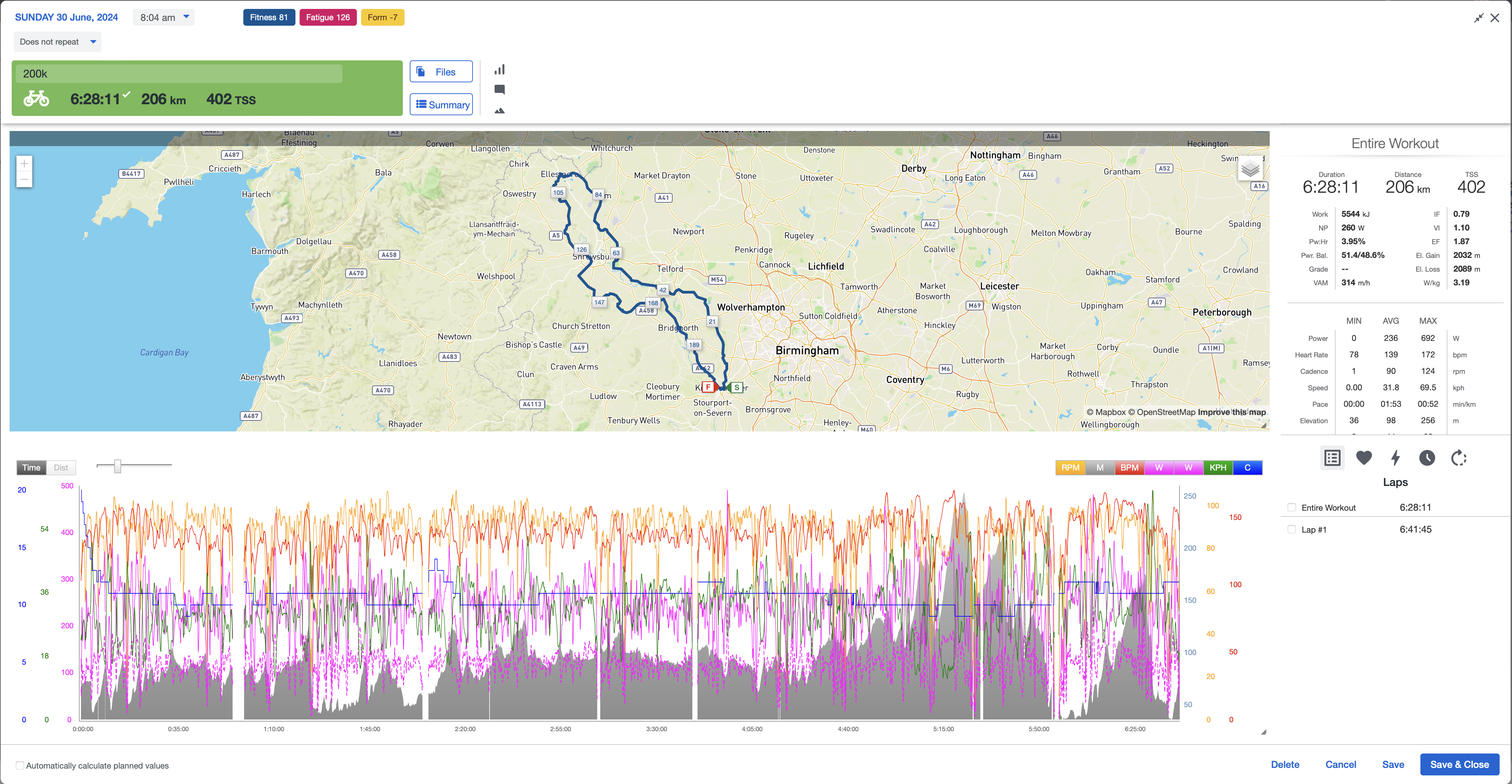
I have done a couple of 200km rides this year. One with a team in Spain, on smooth roads and with the draft of other riders to follow, and the other as part of a gravel event, during which I suffered horrendously in the latter half. For the most part, I have been riding 100-110 km, once a week, taking 3-3.5 hours generally. This meant that for the 206 km I did in 6.5hr, I had done about half of that in preparation - leaving me not particularly well conditioned. My legs felt heavy, my shoulders ached, and my hands went a little numb with 30km to go.
As we expose ourselves to a stimulus, our body adapts, that is how training works. I had not exposed myself to adequate stimulus to be fully comfortable during this ride, and it showed. Even a bit more work on my shoulders as part of S&C would have made a nice difference.
Blowing up in more ways than one
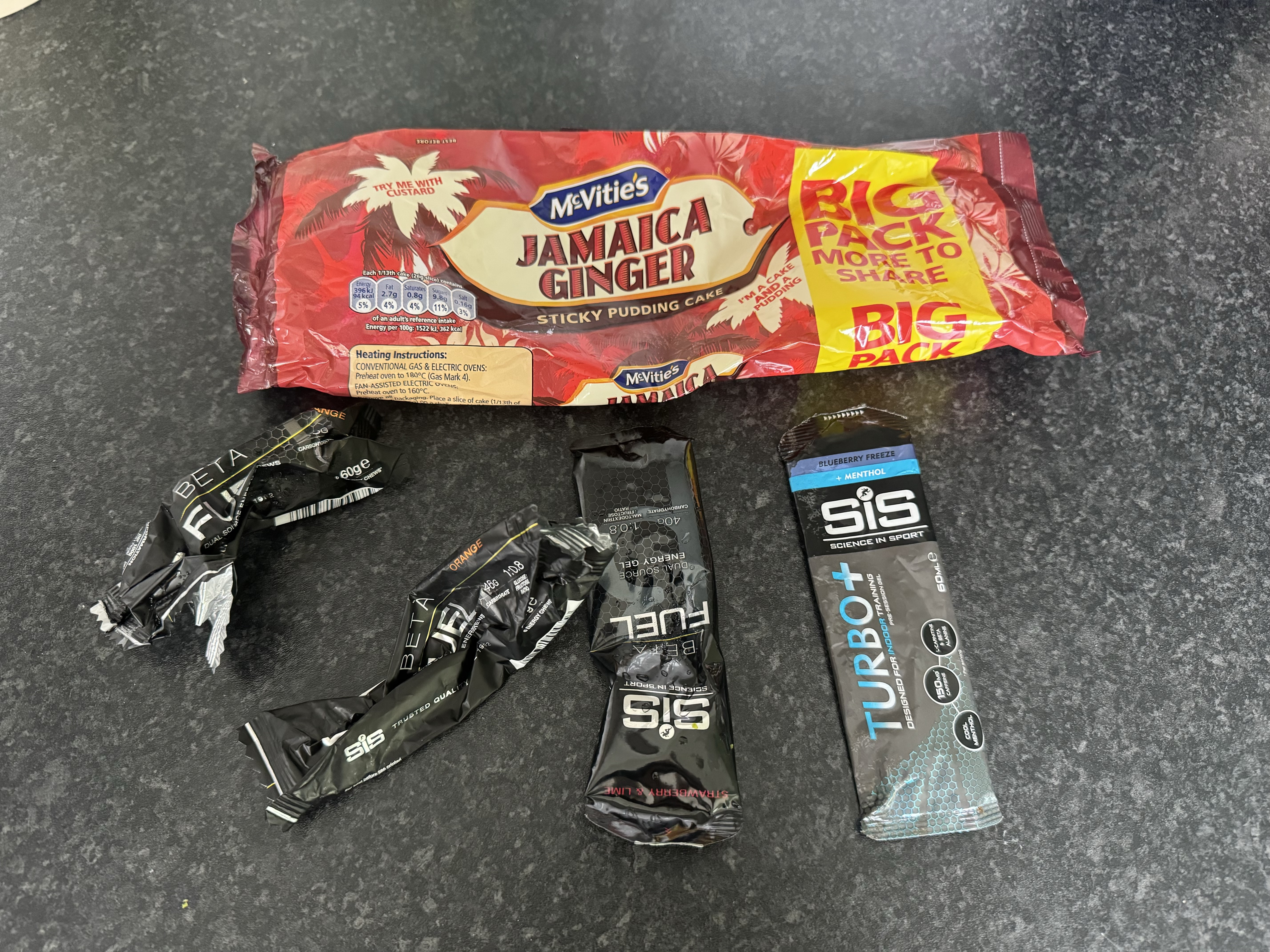
Then we have another issue with conditioning: nutritional conditioning.
Although I did manage to consume 90g/hr of carbohydrates for the full 6.5 hours, it was not without its challenges. I balanced the amount of solids to liquid fuel quite nicely, so I didn’t feel overly full. However, I have not been training with this carb load habitually during my shorter rides, and, especially not over a ride of this duration. The result was a fair bit of bloating and frankly, gassiness, that made the final 90 minutes of the ride not the most pleasant. I was not quite at Tom Poomoulin levels, but it certainly made the ride more uncomfortable than it needed to be.
The human body can be conditioned to take on a high dose of carbohydrate per hour, however, this takes practice, so more rides of this distance and taking on this volume of fuel would have been beneficial.
The bottom line
So there we have it. Not all rosy, but not all a doom and gloom experience, either.
The overarching theme is that the key to success is planning for all eventualities, and training specifically for the demands of whatever challenge you are facing. To do this the best way possible, you need to work backward from the end goal.
For this 200km ride, for example, I knew I would have to eat 90g/hr of carbs, I should also have considered needing to train my gut properly for this carb load. I considered that the route would be better as a headwind out and tailwind back, but I didn’t quite take into account how steep some of the latter climbs were or that my gearing was not as optimal for the level of fitness I have.
It can sometimes help to get someone else to go over your planned prep too, as an objective viewpoint is very valuable. After the ride, a good friend of mine pointed out I could have gone around the hills and altered the route slightly to have a far more pleasant and flatter final 50km or so. Whilst I am a coach myself, I still prefer input from others over planning in a vacuum: an objective assessment without personal bias is always an asset.







